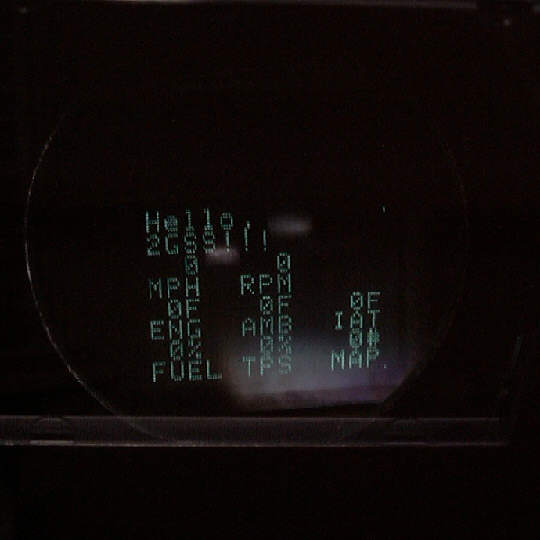|
Never Forget |
||||||||
|
|
||||||||
EngineInteriorExteriorOld Items1C3EL75R62N324237Car InformationThe Society of Automotive Engineers Car EnthusiastsCar Parts Vendors |
2002 Chrysler Sebring Convertible GTC
|
|||||||
 |
| Oil Pressure Gauge Installation Mounted on A-Pillar |
True Head-Up Display
I wanted a head-up display, such as can be found in both fighter aircraft and in the newer high-end GM cars. To this end, I researched ways into reading the car's internal data network.
I found out that the car uses a standard SAE J1850 VPW network, which has a defined timing protocol and a defined electrical waveform. The standard itself is pretty easy to find at the SAE website. The car uses this network to pass messages between the PCM, BCM, CMTC, factory radio, and instrument cluster in a standard SAE J2178 data format. Again, this is pretty easy to find on the SAE website. ELM Electronics sells a little PIC-based SAE J1850 interface chip, that uses a 20 MHz crystal, and that acts as a bridge between the J1850 network and a standard serial interface. This is what I'm using.
I decided to use a Noritake-Itron 64x128 pixel vacuum fluorescent display (VFD) for the actual HUD display. This unit is kind of tricky to program, but I was able to get it to display some text after figuring out the VFD's quirks.
 |
| Homebrew Head-Up Display, with a "Hello, 2GSS!" message |
I currently am looking for a decent 5 VDC power supply to power the VFD. A normal linear supply, such as would be made from a 7805 voltage regulator, is not sufficent to provide the approximate 1 A requirement for the VFD, without having to resort to a noisy forced air cooler. Other than that, the unit is almost ready for in-car testing.
Other trademarks and logos are copyrighted by their various owners.
This website copyright © 2000-2015 Thomas A. Vago. All Rights Reserved.